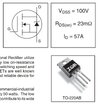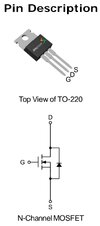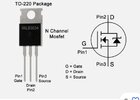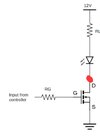Follow along with the video below to see how to install our site as a web app on your home screen.
Note: This feature may not be available in some browsers.




I know, I hate that too. Is it too much to ask?...but it would be nice if the datasheet confirmed that.
Current sharing was not the concern. Each MOSFET is controlled separately, driving separate loads. At least current sharing is not the intent.Since FETs have a wide Vgs spread, they won't have good current sharing in linear mode and would have to be pulse switched.
How?I am Limiting the current to each MOsFet at 2A.
I have some heatsinks that I might use if the MOSFET gets wam
Ether measure the current with a multimeter or connect one to the power supply module you have to verify.
